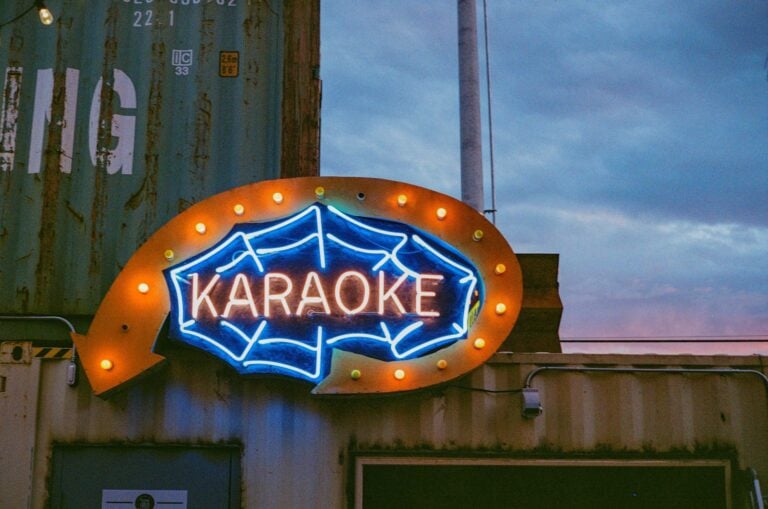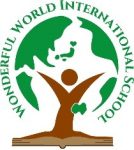
When many foreigners think of karaoke, we think of awkward bars with someone standing on stage and singing songs out of key. It’s easy to feel uncomfortable about singing in front of others and decide you don’t care to experience karaoke. However, many people don’t realize that the karaoke experience in Japan is quite different from what we might imagine in the West.
Japanese karaoke venues span a diverse spectrum, catering to varied preferences and occasions. The quintessential karaoke box offers private rooms equipped with state-of-the-art audiovisual systems, ensuring an intimate and immersive experience.
Let’s step into the world of Japanese karaoke and discover a realm where music lovers come together to embrace their inner stars.

Where does karaoke come from?
The history of karaoke can be traced back to the early 1970s. The word “karaoke” itself is a combination of two Japanese words: “kara,” meaning “empty,” and “okesutora,” meaning “orchestra.” The inventor of karaoke is credited to Daisuke Inoue, a Japanese musician and entrepreneur.
Inoue, who was a drummer in a band, noticed a demand for recorded instrumental music that people could sing along to during parties and gatherings. He came up with the idea of creating a machine allowing individuals to sing along to popular songs without needing a live band. In 1971, he invented the first karaoke machine called the “8 Juke.”
Initially, Inoue’s karaoke machines were rented out to bars and establishments for entertainment purposes. Patrons would select a song from a list and sing along to the instrumental track while following the lyrics displayed on a screen. The concept quickly gained popularity, and karaoke machines were installed in various venues across Japan.

In the late 1970s, karaoke machines began to incorporate cassette tapes, allowing for a wider selection of songs. This innovation further propelled the popularity of karaoke and made it more accessible to the general public. People could now sing their favorite songs in karaoke bars, lounges, and even at home with their own karaoke machines.
Karaoke’s popularity continued to rise throughout the 1980s and 1990s, not just in Japan but also in other parts of Asia, particularly in countries like South Korea and the Philippines. In the following decades, karaoke spread to other parts of the world, including Europe, North America, and beyond, becoming a global phenomenon.
The technological advancements of the digital age further revolutionized the karaoke experience. CD+G (Compact Discs with Graphics) and DVD-based karaoke systems replaced cassette tapes, providing improved audio quality and enhanced visual displays. Additionally, with the advent of the internet and digital music libraries, karaoke enthusiasts could access an extensive collection of songs from various genres and languages.
Since then, karaoke has flourished into a beloved form of entertainment, transcending boundaries of age, profession, and social status. In Japan, karaoke serves as a delightful outlet for stress relief, self-expression, and bonding among friends, colleagues, and family members.
What are the different types of karaoke?
There are various types of karaoke booths or establishments in Japan, each offering a unique experience to cater to different preferences and occasions. Depending on your style, you may find one that best suits you.
Karaoke Boxes:
Karaoke boxes, also known as karaoke rooms or karaoke parlors, are the most popular and prevalent type of karaoke establishment in Japan. They offer private rooms with karaoke machines, audiovisual systems, and comfortable seating. Depending on size, these rooms can accommodate small groups of friends or larger parties. Karaoke boxes provide a more intimate and customizable experience, allowing individuals to enjoy singing and socializing privately. In most times, if you go out to karaoke with friends or coworkers, these are the types of places you’ll find yourself in.

Karaoke Cafes:
Karaoke cafes, also called karaoke lounges or karaoke bars, provide a more casual and open atmosphere than karaoke boxes. These are more similar to what we are used to in the West where, instead of private rooms, there is a common area with a stage and seating where people can sing and enjoy performances together. Karaoke cafes often have a bar or drink service, creating a lively social environment. They are popular among solo singers, groups of friends, and even individuals looking to meet new people who share a love for karaoke.

Karaoke Pasela Akihabara
Karaoke Chains:
In addition to independently operated karaoke establishments, Japan is home to several karaoke chain franchises. Typically, these are private karaoke booths, but you can easily set up accounts online, earn rewards, and visit the different locations anywhere you travel. They tend to have more standardized services, quality equipment, and extensive song libraries. Some well-known karaoke chains in Japan include JOYSOUND, Big Echo, and Karaokekan. Although personally, I am biased towards visiting the large chain here in Kansai, Jankara.

Janakara Karaoke Chain
Karaoke on Wheels:
Mobile karaoke booths have become increasingly popular in recent years. These small, portable karaoke booths can be rented for events, festivals, or parties. They often come equipped with karaoke machines, microphones, and speakers, allowing people to enjoy karaoke anywhere, even outdoors. Mobile karaoke booths provide a fun and convenient option for those who want to bring the karaoke experience to different locations, especially if you want to add karaoke to social events such as Hanami (flower viewing).
What do I do in a karaoke booth?
So say you want to go to a karaoke booth, but now you’re still trying to figure out what to do once you get there. Don’t worry, most karaoke booths are very easy to navigate. Upon arrival, you may need to check in at the reception desk or front counter. If it’s your first time at the establishment, you may be asked to provide identification and register as a customer. Some places (particularly large chains) may require a membership card or provide a temporary membership for the duration of your visit.
Karaoke establishments often offer different pricing plans or packages to suit various needs. Most of these times they are depended on the length of your stay, the number of people in your group, and what sort of services you would like (such as food or nomihodais). At this time, you may also be asked to choose which type of machine you want (such as DAM or Joysound).
If you are at a karaoke box, you’ll be guided to a private room based on the size of your group, although if you’re in a large chain, you may just be given a room number to go to. This room typically includes a karaoke machine, microphones, a TV or screen, and seating arrangements. And, of course, you will also likely find food and drink menus for snacks that you can order to have delivered to your room.
Now you can just queue which song you want to sing and have fun! It is recommended to take turns queuing with your friends so that while one sings another can choose the next song making it easy to take turns.

lifestyle
When your karaoke session comes to an end, call the staff to settle your bill or, if you’re in a major chain, return to the front desk, where you can find a payment machine. The total will be calculated based on your chosen plan, any additional services or refreshments you consumed, and the duration of your stay. In Japan, it’s most common to split the bill evenly across everyone, like at an Izakaya.
How do I choose a karaoke machine?
The two major karaoke systems in Japan are DAM and Joysound. Private booths may have a sign displaying what they carry, but large chains tend to let you choose through various options. Typically, Joysound has many selections of songs, including a variety of singles, albums, anime, vocaloid, and even quite a strong collection of foreign songs. However, if you like seeing your favorite artists while you sing, DAM’s LIVE DAM machine has quite a large collection of music videos and live footage to play in the background of your karaoke experience. For anime lovers, you can also see the opening to your favorite anime while you sing.
Final Tips for Karaoke!
Don’t worry about sounding silly because the purpose of karaoke is not to be the best performer but to enjoy music with your friends. If you feel shy to try, find a song multiple people in the room may know and sing it as a group instead of as a solo. Many songs break international borders, so it’s a good opportunity to bond with people from all over the world through a shared love of music.













